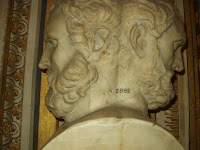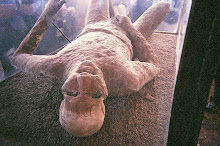

New Years is a cherished holiday today, but what about more than 2000 years ago? Well first, I have to say that New Years has been celebrated since the beginning of civilization. Scholars think that the first people to celebrate New Years were the Babylonians. This may sound odd, but they stripped the king of his clothes and sent him away while the Babylonian citizens did whatever they wanted to do for eleven days. Finally, the king would return after the eleven days passed and his people would go back to their jobs and other things.
The Babylonians celebrated New Years in March, and the Romans copied this practice for many years. But in 46 B.C., Julius Caesar changed New Years to January 1st and instituted his "Julian" calendar. Imagine Easter being moved to December by the president! January was named after the Roman god Janus. Janus is depicted with two faces, one facing the past year, and one facing the new year.
So, to give you a straight up answer, the Romans did celebrate New Years. The feasting started on December 17th, the feast of Saturnalia, lasted through Janus Day on January 1st, and ended on January 3rd, with the religious feast of Compitalia. Similar to the Babylonians, this long period of feasting was marked by closing of the law courts, masters serving slaves, children running households in a game called misrule, and generalized merry making.
ANNUM FAUSTUM! (HAPPY NEW YEAR!)










